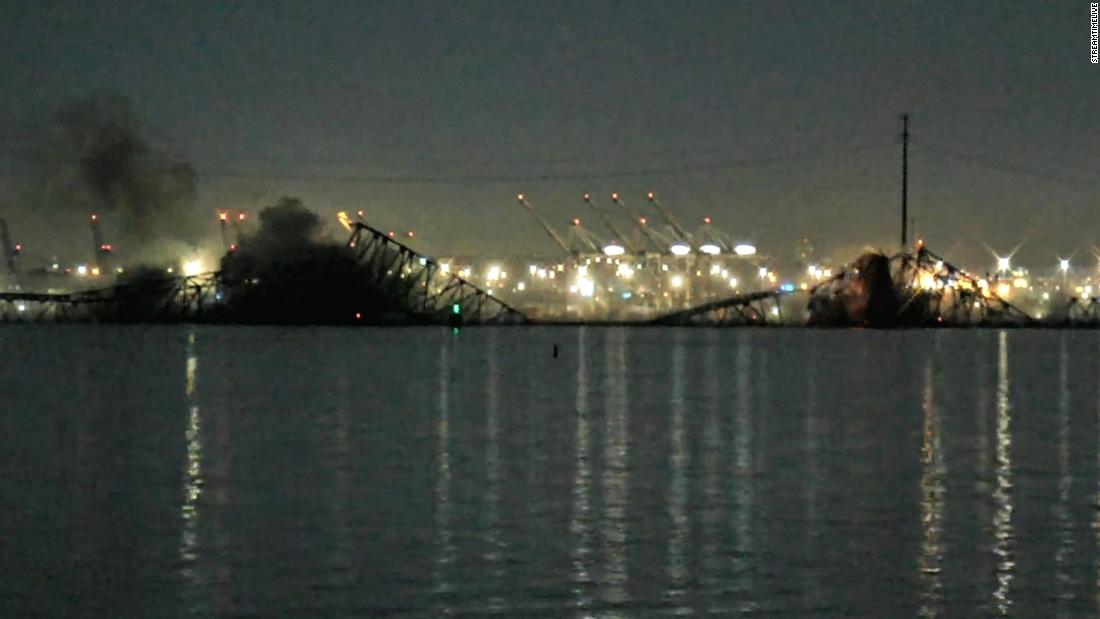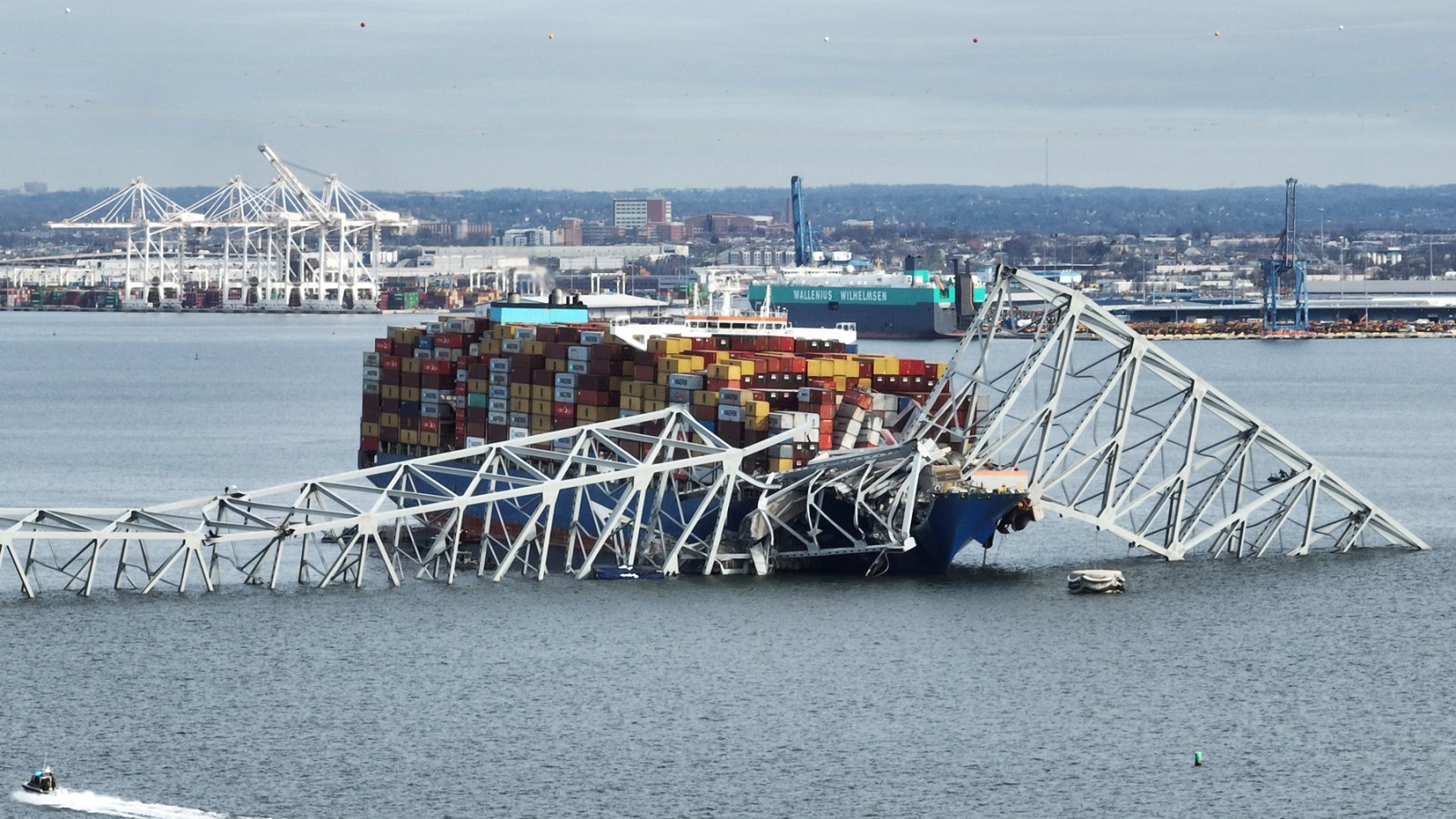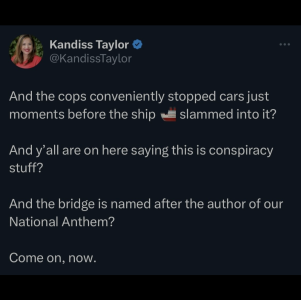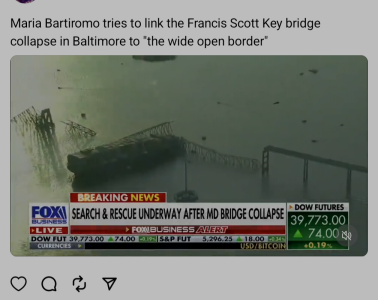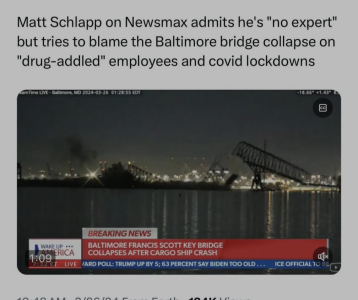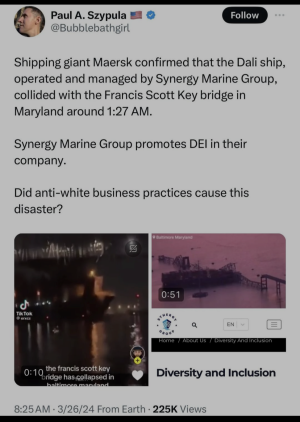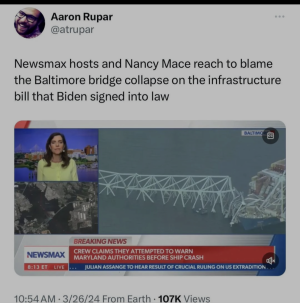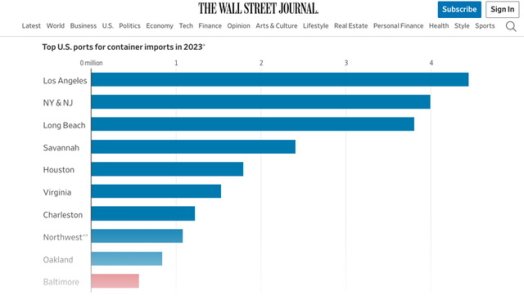Where were the tug boats? Current was 8 knots out to sea. The ship would have to exceed that speed to have steerage. Where were the tug boats?
Tugboats left before ship reached Baltimore bridge. They might have saved it.
As investigators work to determine what caused the hulking Dali container ship to topple Baltimore’s Francis Scott Key bridge in a matter of seconds on Tuesday, maritime experts around the country are pointing to what could have stopped it.
Tugboats.
These small but mighty vessels tow and push ever-larger ships through channels and help them where their own propulsion systems – or lack thereof – cannot. They are standard equipment in ports worldwide and especially useful to help ships with docking and undocking.
On Tuesday, a pair of tugboats operated by McAllister Towing and Transportation did just that, helping the Dali unmoor itself from the main terminal at the Port of Baltimore and orient the ship toward the open waters.
But
they broke away before the massive ship navigated under the bridge, as is common practice. Minutes later, the Dali appeared to lose power and propulsion, sending the craft adrift and directly into one of the bridge’s support columns. The steel-truss bridge immediately collapsed into the frigid Patapsco River.
The accident is igniting debate over the proliferation of “megaships” that fuel today’s commercial transportation industry and whether port protocols have ramped up to safely accommodate them. Although the Dali is average-sized compared to many of these behemoths, the devastation it caused in Baltimore was formidable.
Had the tugboats accompanied the ship all the way under the bridge, some experts said, they might have been able to stop, slow or steer it away from danger.
Such a scenario should be standard operating procedure in all ports, said Capt. Ashok Pandey, a master mariner and associate professor of maritime business at the Massachusetts Maritime Academy. But he said the industry’s reliance on tugs has waned over the years as technological advancements gave many ships the ability to maneuver through channels independently.
Technology is great, Pandey said, until it fails.
“We went wrong by simply equipping ships with bow and stern thrusters that we use in lieu of tugs to maneuver in and out of the ports,” Pandey said. “When we are getting into ports like Baltimore, within a few miles of the bridge, that's too important an asset that we must think of protecting it by all means possible. And we can do that. We can easily do that.”
It may be rare for a ship to lose power at such a high-stakes moment, but it clearly does happen, and he said tugboats could have averted catastrophe.
Implementing such a practice, though, would require a significant investment for U.S. ports, which either own and operate their own tugboats or contract out for tug services. Those costs are then rolled into the ports’ fees charged to shipping companies who use their facilities.
“There are a finite number of tugs, and 99.9% of the time there are no issues,” said Sal Mercogliano, a former merchant mariner and current maritime historian at Campbell University who also hosts a YouTube show called “What’s Going On With Shipping?”
“If the port required tug escorts in and out, then they would not be able to help other ships dock, and undock,” Mercogliano said. “It would need more tugs, and the question becomes, how much will this cost, and will it be passed on to the consumer?”
Because ports compete with each other for shipping business, he said, it’s unlikely that one port would mandate tug escorts unless all of the ports did it for fear of losing lucrative contracts. Shipping companies want the most efficient and cost-effective deal and will simply move to the next port if confronted with higher costs or longer waits.
Mercogliano said he’s not even sure tugboats would have been able to stop the Dali from hitting the bridge. At the time its power appears to have failed, the ship was going about 8 knots – roughly 9 miles per hour – with a weight of over 100,000 tons.
“It would be like a Prius trying to move a Mack truck on the highway,” he said.
